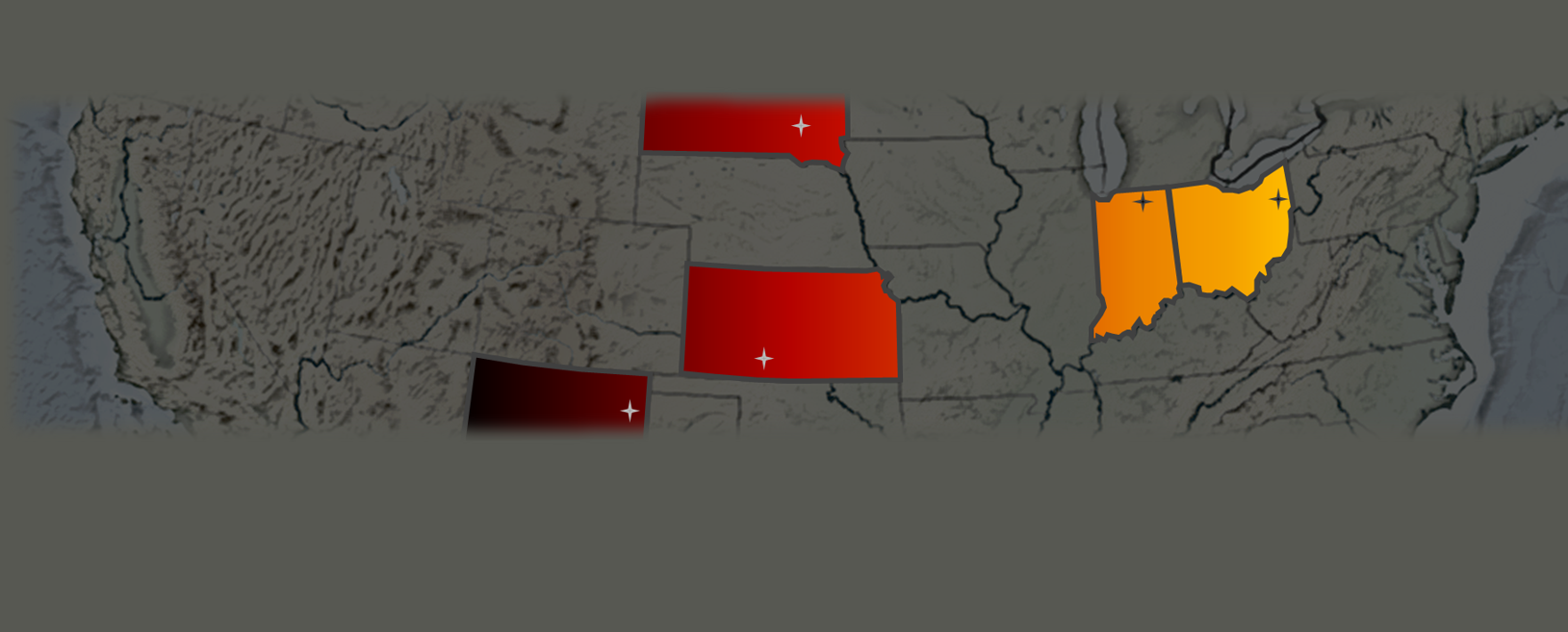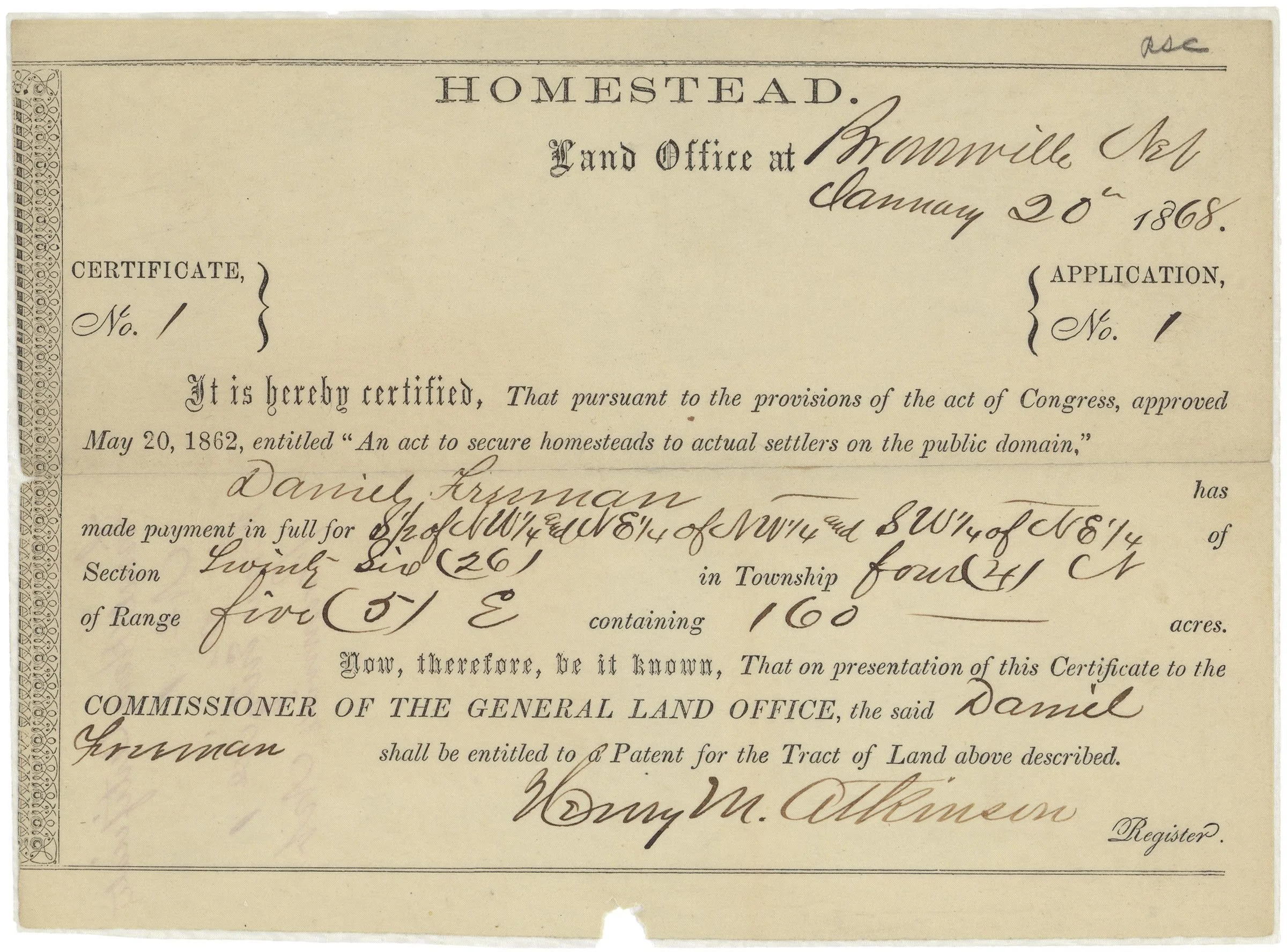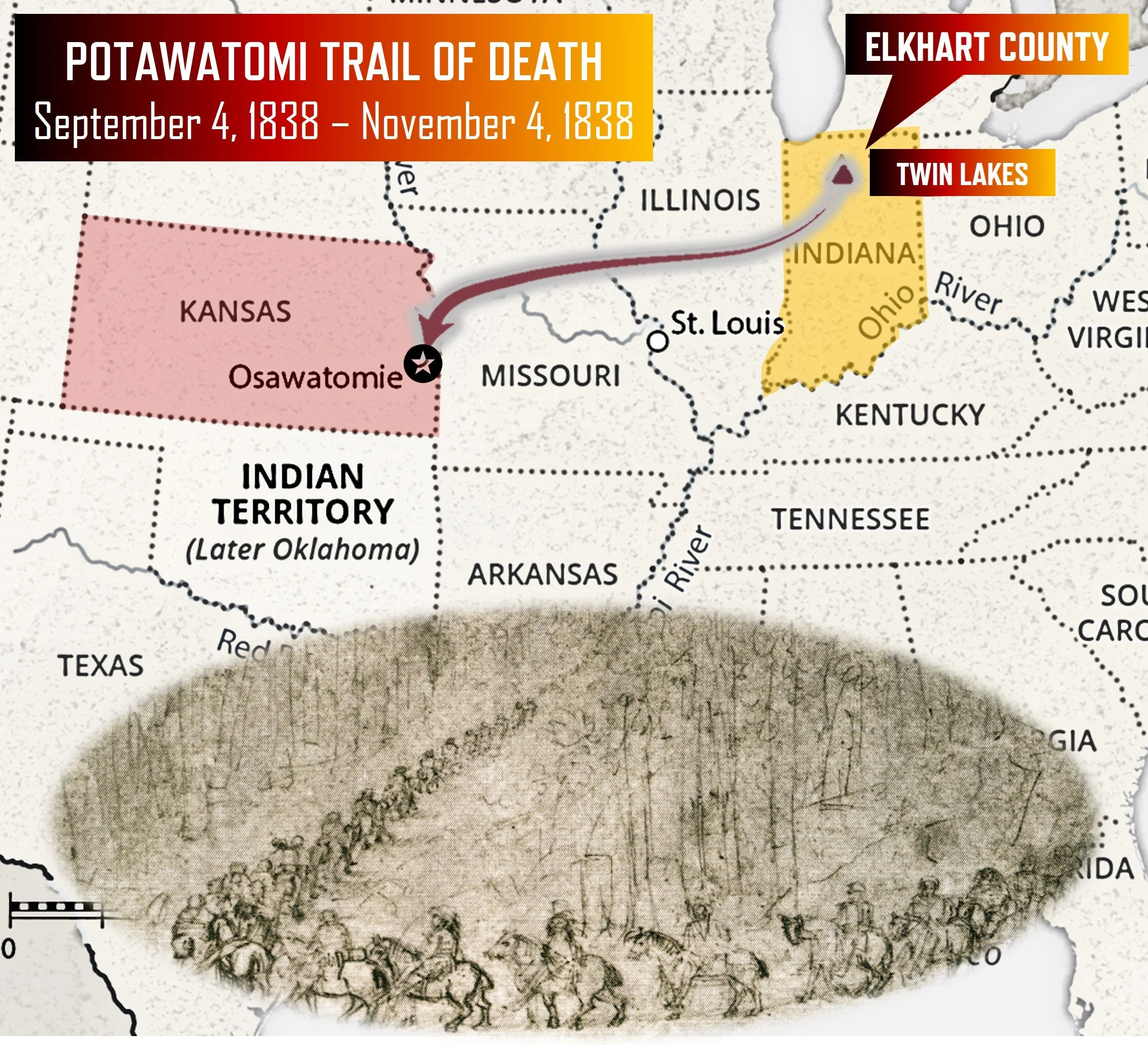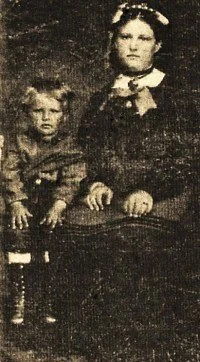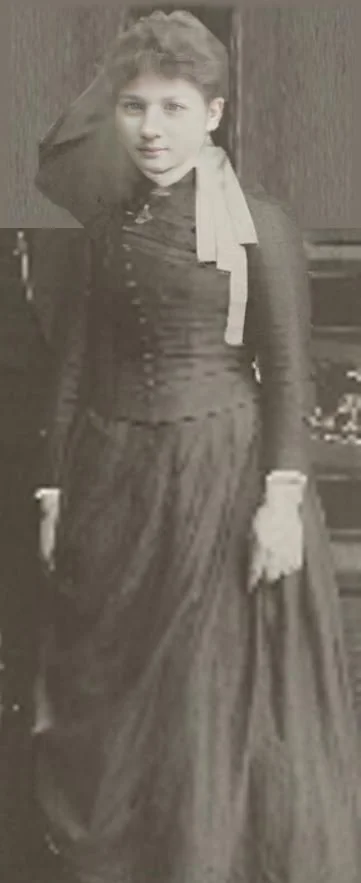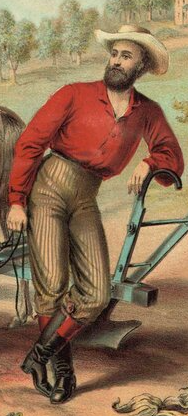Introduction
A WESTWARD MOVE FOLLOWING THE SAVING OF NATIONAL UNION
The first homesteading certificate was issued to Daniel Freemen in 1868. Beginning at that time, westward expansion was greatly accelerated by the Homestead Act by granting adult heads of families 160 acres of surveyed public land for a minimal filing fee and five years of continuous residence and “improvement” of that land.
What was the lure of following westward expansion for the Link family? Was land in Indiana available for less if they were willing to clear forest and rock? Were friends who sent back encouragement waiting ahead? Or was there a basic need embedded in Jacob’s DNA to investigate something that might be “better?”
Whatever the reasons, which are no longer known, following the Civil War's 1865 conclusion, Jacob and Elizabeth found themselves ready to undertake a major change in their lives. And to take their surviving children on another journey.
It is not known if the move from Ohio to Indiana was encouraged by the promise of cheap land. However, thousands of families were motivated to begin a westward trek on that basis, and there were lands in both Ohio and Indiana eventually made available. However, it was too early for homesteading to be an immediate factor in the Link’s decision. The first homesteading certificate would not be awarded for three years. However, applications for homesteading began in 1863. What seems most likely in the already settled area the Link family was going to in Indiana was that they bought land previously owned and probably improved.
The Homestead Act of 1862 had been enacted by Congress and signed into law by Abraham Lincoln on May 20, 1862. On January 1, 1863, Daniel Freeman made the first claim under the act, which gave citizens or future citizens up to 160 acres of public land provided they lived on it, improved it, and paid a small registration fee. The Government granted more than 270 million acres of land in this manner while the law was in effect. Freeman was awarded the first homestead certificate on January 20th, 1868, five years after his application and start on his claim along the Mississippi River near Brownville, NE.
A U.S. Park Service National Monument is dedicated to the interpretation and impact of the Homestead Act on America, the “pioneers,” and their westward expansion. It is located on the high plains of Nebraska near Beatrice and 67 miles almost due west of Brownville, where Freeman struck his 160-acre claim.
So for reasons lost to time, the Link family was compelled to pull up stakes and move 275 miles nearly due west. They arrived in the northern Indiana county of Elkhart. It is known that the Links had personal relations with other Mennonite people in the area of Elkhart County they were moving to.
Like many Mennonites (and other Anabaptists) who had come to that area of Indiana, they embarked on a new life as trees were cleared, crops were planted and cities and churches were built. Originally, this took place where generally little had been changed by Europeans previous to about 1827. Some French settlements, with Vincennes on the Illinois side of the state being the largest, were scattered across Indiana beginning in the 1730s. Jacob and Elizabeth brought their family to an area that was already well populated and with established cities - such as Wakarusa and Nappanee, but also still considered frontier.
Unsettling to settle
Base map from Smithsonian Museum of the American Indian. Historical illustration from Citizen Potawatomi Nation Cultural Heritage Center. Map modified for this publication.
Prior to European settlement, northern Indiana was home to Miamis, Delawares, Pottawatomies, Shawnees and other native communities.
All of these groups were eventually dislocated by expanding mostly European settlement. The largest immigrant group to settle in Indiana was German, however many immigrants from Ireland and England also moved into Indiana as did other groups. The French had established the first European settlement in Indiana at Vincennes in 1732.
Founded in 1830, with early settlement the year before, Elkhart County was originally home to the indigenous Potawatomi tribe. The Potawatomies were one of several indigenous groups in the northern part of Indiana. Eight years later, the Indiana portion of the widely scattered tribe was forcibly removed to Osawatomie, KS, along a route that became known as the Trail of Death.
Homesteading offered a good start for 40% of all the colonizing farmers who were successful on their claims. Homesteading populated 10% of American land from 1862-1974. However, at the same time, it represented a bad ending for most traditional homes of indigenous peoples across the nation who were either moved, often more than once, or even brought to extinction during conflicts. In some cases, years of war and resistance took place with the Massacre of Wounded Knee signifying the last major conflict in 1890. However, in the West, conflicts continued well into the 1900s with an engagement between Yaqui warriors and U.S. 10th Cavalry soldiers occurring January 9th, 1918 near the border of Arizona and Mexico.
Elkhart County, IN - Library of Congress
Building a new farm, a new life and raising a new family
The area of Indiana the Link family moved to was home to many other Mennonites and immigrants from Germany. Elkhart County was founded April 1, 1830.
Many other Mennonite families also moved farther west, a trend of the expanding nation. There were often opportunities available for industrious families closer to the frontier where towns were being built and wooded areas cleared for farmland. Jacob and Elizabeth purchased (or is is possible they established) a farm between two small Indiana towns, Nappanee and Wakarusa. Both remain small towns today with 7,000 and 2,000 populations respectively. Jacob and Elizabeth became members of Holdeman Mennonite Church, four miles from their farm home just outside and south of Wakarusa. The church, founded in 1851, continues today.
The 7 Chapters in the right column tell their Indiana story.

